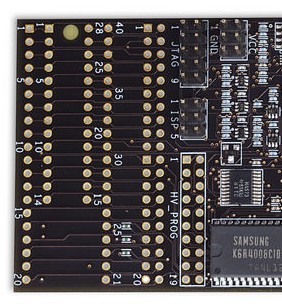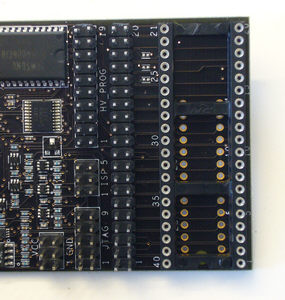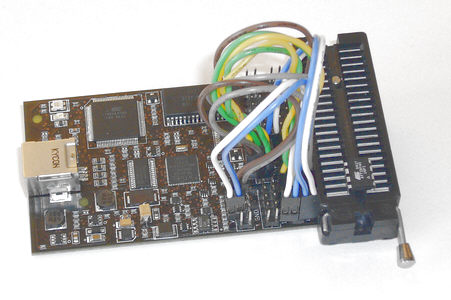5 Using the Onboard Prototype Area

The Atmel AVR Dragon has layout for a 40-pin and a 28-pin PDIP socket. The DIP socket pins are connected directly to the 40-pin Header connector. By strapping the SPI, JTAG, HV_PROG, and VCC header signals to the 40-pin header connector, programming and debugging can be preformed without the need of an external target board.
This section shows how to strap the AVR Dragon for different operation modes. Each supported AVR device has its own Device Connection Sheet containing all information required.
There is a number of ways to utilize the prototype area. If only one device type/programming mode is to be used, the easiest and cheapest way is to just solder wires directly from the HV_PROG, SPI, JTAG, and VCC headers to the EXPAND header. However, to make the board more flexible, header connectors can be soldered in to allow connecting cables without soldering.
Here is a suggestion on how to modify the AVR Dragon board to make it flexible and able to use all DIP socket AVR devices.

In this picture one 20-pin header connector, a 40-pin header connector and a 40-pin DIP socket has been soldered onto the AVR Dragon.

To make it even more flexible and allow for narrow DIP packages, a ZIF (Zero Insertion Force) DIP socket has been added in the picture above. Additional sockets can be bought from third party vendors to support MLF/QFN, TQFP, SOIC, etc. packages. www.atmel.com/products/AVR/thirdparty.asp#adapters.

And finally the complete setup for debugWIRE and SPI programming of the ATtiny45. For details on how this is connected, have a look at the ATtiny45 Device connection sheet.
